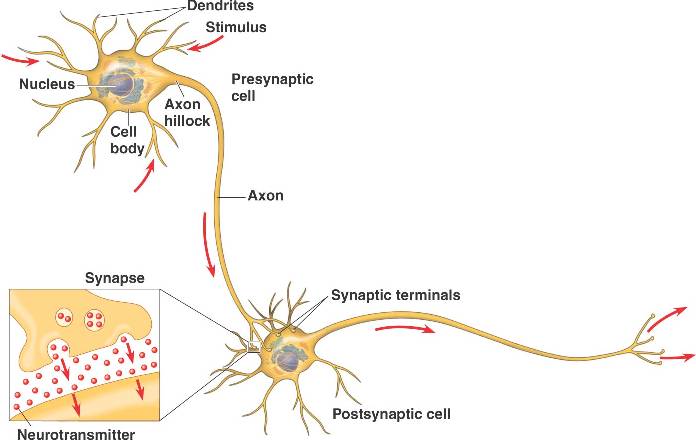by: Emily Smith
 |
| You can't tell from the bowl cut and missing front teeth, but I was once mistaken for a child prodigy. |
Play this while you're reading to elevate your level of classiness!
My brush with almost-greatness made me wonder, what would the brain of a true genius look like? Was Mozart hard-wired to compose awesome orchestral pieces? Was Einstein destined to confuse physicists everywhere with his Theory of Relativity? Was DaVinci's brain tinkered so he could be the father of invention? How are young teenagers going to college????
 |
| Nolan Gould, a.k.a. Luke from Modern Family, is 15 and is taking college courses. Can you taste the irony? |
What is gray matter?
Gray matter is the part of your brain that houses all the cell bodies and axon terminals to form synapses, thus allowing signal transduction through chemical (neurotransmitters) and electrical (action potentials) signals. The white matter houses the neural axons, which allow regions of gray matter to communicate.
 |
| Basic structure of neurons and how they communicate |
The Brodmann areas are simply a way to map and describe the brain's functions. When your brain receives information, it generally moves from the back of the brain to the front. The frontal lobe is responsible for higher thinking and planning (characteristic of modern humans).
So what does this mean?
Basically, it is the physical structure of the brain and not necessarily any chemical change that leads to intelligence of astronomical proportions. For example, Einstein's brain has been analyzed by several labs since his death in 1955. Diamond and colleagues (1985) postulated that there might be differences between the neuron:glia ratio in Einstein's brain. The study concluded, however, that Einstein's neuron:glia ratio in the overall brain was not significantly different from the "control" population (Diamond et al., 1985). Witelson et al. (1999) described differences between Einstein's brain and an otherwise equal male control brain, finding enlarged parietal lobes (~15% wider than the control!) and a complete absence of the parietal operculum (try saying that 5 times fast…). Specifically, the inferior (left) parietal lobe was larger than average; this part of the brain is responsible for mathematical thought and visuospatial cognition (Witelson et al. 1999), leading some researchers to believe the unique brain structure was a large part of Einstein's brilliance.
 |
| Figure 2 from Witelson et al. 1999 visualizes the differences between Einstein and a "normal" male human |
 |
| Figure 2 from Shaw et al. 2006 shows changes in cortical thickness as it relates to developmental age of different brain regions important for intelligence |
A savant is defined as a person with serious cognitive impairment (either developmental or acquired) who also has a so-called "island of genius," or incredible skills that invariably involve massive memory (Treffert, 2009). Generally, savants have fine-tuned abilities in memory, drawing, music, calculating, reading, and several others (Bolte and Poustka, 2004). Treffert (2009) focused on describing the brain of Raymond Babbit, better known as "Rain Man." He is an autistic savant that is missing the corpus callosum, or the partition between the left and right brain, that allows him to quickly skim and retain information from two pages at once (Treffert, 2009). It appears as though brain structure may play an important role in this class of "genius" as well, though there are many disagreements about whether savants can really be considered geniuses.
 |
| Us "non-geniuses" can't read a book with each eye on a different page…I'm going cross-eyed just trying to imagine it! |
Check out this awesome "60 Minutes" video about one of the more recently famous savants, Derek Paravicini:
So in essence, brain structure and course of development seem to be key for predicting genius-level IQ. There is still much to be figured out about geniuses and savants, but these discoveries could lead to a higher level of understanding of the modern human brain.
Though music might not be my calling, maybe listening to Mozart in my early years has primed my brain for science. Maybe, just maybe, I'll just become the next Nobel Prize-winning biologist!
;)
References
1. Bolte, S., and F. Poustka. 2004. Comparing the intelligence profiles of savant and non savant individuals with autistic disorder. Intelligence 32: 121-131.
2. Diamond, M. C., A. B. Scheibel, G. M. Murphy, Jr. and T. Harvey. 1985. On the brain of a scientist: Albert Einstein. Experimental Neurology 88: 198-204.
3. Haier, R. J., R. E. Jung, R. A. Yeo, K. Head and M. T. Alkire. 2004. Structural brain variation and general intelligence. NeuroImage 25: 425-433.
4. Shaw, P., D. Greenstein, J. Lerch, L. Clasen, R. Lenroot, N. Gogtay, A. Evans, J. Rapoport and J. Giedd. 2006. Intellectual ability and cortical development in children and adolescents. Nature 440: 676-679.
5. Treffert, D. A. 2009. The savant syndrome: an extraordinary condition. A synopsis: past, present, future. Philosophical Transactions of the Royal Society B 364: 1351-1357.
6. Witelson, S. F., D. L. Kigar and T. Harvey. 1999. The exceptional brain of Albert Einstein. The Lancet 353: 2149-2153.
Links
http://24.media.tumblr.com/tumblr_m606xsXwTl1qk6wc3o1_250.gif
http://www.umich.edu/~cogneuro/jpg/Brodmann.html
http://www.indiana.edu/~p1013447/dictionary/greywhit.htm
http://25.media.tumblr.com/tumblr_mbp8h0jyyw1qzpwi0o1_500.gif
http://www.youtube.com/watch?v=Ak2jxmhCH1M
http://bio1152.nicerweb.com/Locked/media/ch48/48_05NeuronStructure.jpg
http://www.psy.dmu.ac.uk/drhiles/Savant%20Syndrome.htm
http://www.youtube.com/watch?v=cbqjxmTNivQ
http://www.youtube.com/watch?v=Rb0UmrCXxVA



No comments:
Post a Comment